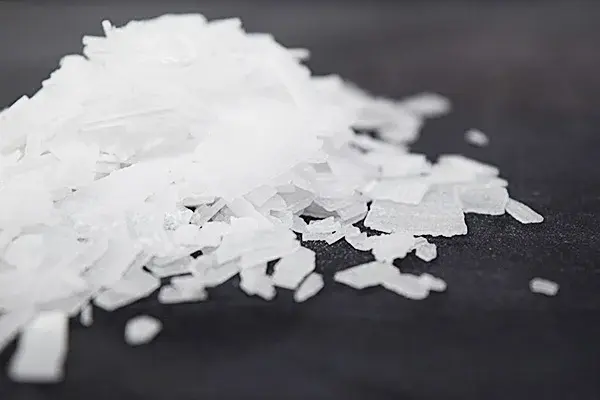What is Polyethylene Wax?

Polyethylene wax is a low molecular weight polymer derived from ethylene. It is a solid material that can be processed into different forms, including powder, flakes, and granules, depending on the intended application. PE wax has a high melting point and excellent chemical resistance, making it suitable for a broad range of industrial uses.
At Shams Javid, we offer premium-grade polyethylene wax tailored to meet the specific requirements of different industries. Our product is renowned for its quality, consistency, and superior performance in demanding applications.
Key Characteristics of Polyethylene Wax
- High Melting Point: PE wax has a melting point typically ranging from 100°C to 120°C, which allows it to perform well in high-temperature applications without losing its properties.
- Lubricating Properties: It acts as an excellent internal and external lubricant, especially in the plastic and rubber industries, improving the processing flow and reducing mechanical wear.
- Chemical Resistance: Polyethylene wax is resistant to chemicals, including acids, alkalis, and solvents, making it suitable for use in harsh environments.
- Good Dispersibility: It helps evenly distribute pigments and other additives in products like paints, coatings, and inks, ensuring a consistent finish.
Industrial Applications of Polyethylene Wax
- Plastics Processing: One of the primary uses of polyethylene wax is as a lubricant in the plastic manufacturing industry. It improves the processing of polymers like PVC and polyethylene, making extrusion and molding processes more efficient. PE wax helps reduce friction between polymer molecules, leading to smoother material flow and less wear on machinery.
- PVC Manufacturing: PE wax is used in PVC extrusion processes to improve the final product’s surface finish, increase output rates, and reduce energy consumption. It acts as both an internal and external lubricant, enhancing the material’s processability.
- Paints and Coatings: In the coatings industry, polyethylene wax serves as a dispersing agent that ensures even distribution of pigments and additives. This leads to a smoother surface and enhances the durability of the final product. Its chemical resistance also helps protect the coating from environmental wear and tear.
- Adhesives: Polyethylene wax enhances the performance of hot-melt adhesives by improving their thermal stability, flexibility, and strength. It is commonly used in applications like packaging, bookbinding, and woodworking.
- Rubber Industry: In rubber processing, PE wax acts as a processing aid, helping improve the flow of rubber compounds during manufacturing. It also enhances the mechanical properties of rubber products, making them more durable and easier to handle.
Polyethylene Wax Price in Iran
The polyethylene wax price in Iran varies depending on several factors, including global oil prices, supply and demand, and the purity or grade of the wax. Shams Javid is committed to providing competitive pricing for high-quality polyethylene wax, ensuring our customers receive exceptional value. By sourcing top-quality raw materials and utilizing efficient production methods, we offer PE wax at prices that cater to both small and large-scale industrial clients.
For those looking to purchase polyethylene wax in Iran, it is important to consider the specific requirements of your application, as this will influence the type and grade of PE wax needed. Our team at Shams Javid is available to help guide you through the selection process, ensuring you find the right product at the best possible price.
Why Choose Shams Javid for Polyethylene Wax?
At Shams Javid, we pride ourselves on being a trusted supplier of polyethylene wax in Iran. Our products are known for their consistent quality, excellent performance, and reliability. Whether you are looking for pe wax price in iran, coatings, or adhesive manufacturing, we have the expertise and product range to meet your needs.
Contact Us
For more information about polyethylene wax price and product availability, or to receive a personalized quote, please contact our sales team today. We are here to answer any questions and provide the best solutions for your industrial requirements.
[/expander_maker]


 فارسی
فارسی English
English العربية
العربية 简体中文
简体中文 Türkçe
Türkçe





